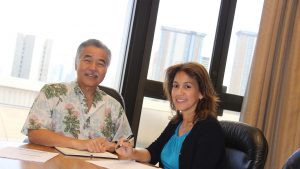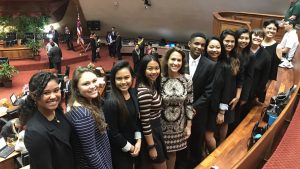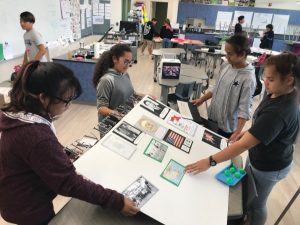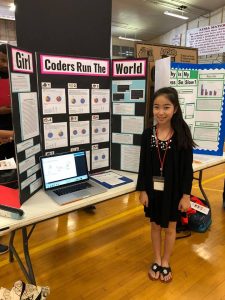DOE’s superintendent: Vision-driven to empower schools
Posted on Mar 29, 2018 in FeaturedDuring her first eight months on the job, DOE Superintendent Christina Kishimoto has become one of the public schools’ biggest cheerleaders. She’s visited all 15 district complexes, talks with pride about the uniqueness of each community, and tweets regularly about the “fantastic things” happening across the state.
But she’s also on a mission to change what has been described as a “top-down, one-size-fits-all” mindset — a concern she says was voiced by many of the more than 100 community members she met during her hiring process. She recalls people asking, “How would you implement the empowerment we want to see in our school system?”
During a recent Capitol Connection interview, Dr. Kishimoto discussed everything from school safety to new Innovation Grants and her determination to change the relationship between the schools and the DOE central office from “permission-seeking to site-based innovation.” To encourage schools to come up with creative ways to address complex issues, the DOE is offering Innovation Grants for schools statewide — the first time it is awarding such funding. “What was centralized before, we’re now pushing into the schools,” explained Dr. Kishimoto. “The idea is to fund some diverse pilot projects.” Priority was given to proposals that increase student learning, close the achievement gap, increase college enrollment and improve teacher retention, among other areas.
“One school wanted to create an alternative pathway for kids who are not engaging in traditional high school. Others wanted to do STEM-focused and project-based learning. The grants also let us talk about how you do this with your core funds (through the Student Weighted Formula created in the 1993 legislation by then-House Education Chair David Ige to direct more resources to the schools). It’s about changing core practices with new ideas,” Kishimoto said.
“I keep finding impressive things when I visit the schools,” she said of visits to Waialua Intermediate and High’s award-winning robotics program and Maui High’s career and technical education projects, such as their visual arts courses and a “tiny house” students were designing and building. The new superintendent’s school visits reinforced her belief that a strong school system encourages creative thinking, new ideas and diverse, locally tailored ways to help students find success. “Our conversations have been more like coaching. Schools don’t have to come to me for permission to try things,” she said. “We need to talk more about our diverse school models. I don’t have one description of my schools. There are common elements: the curriculum has to be rigorous and all kids have to be engaged. There needs to be quality teacher training, and parents and the community need to be involved. But beyond that, schools can decide what the components of that experience are.”
She said she agrees with Governor Ige that we need to create a seamless path to connect students to college and career programs such as Early College and STEM-related activities that can lead to higher-paying jobs in the future. She also maintains that Hawai‘i has “tremendous potential” to create a public school system that’s noted nationally. “We have a rich history of communities supporting their schools,” she said. “We also have a real appreciation of multi-language learning and culture that we haven’t maximized yet.” Dr. Kishimoto said in addition to required standardized tests and traditional measures, Hawai‘i is one of a handful of states that have volunteered to pilot alternative assessments and competency-based learning as a way to measure student progress. “We would ask, ‘What does student success look like?’ It would be great to be a leader nationally for this kind of thinking.”
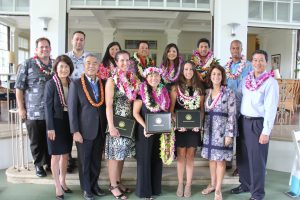
Statewide 2018 Teacher of the Year nominees with Governor and Mrs. Ige, Dr. Kishimoto and Board of Education chair Lance Mizumoto at Washington Place. Vanessa Ching (center) from DOE’s Leeward District was named the overall state winner.
MORE PRIORITY AREAS:
• School safety and security – “I’m moved to see students organizing about school safety issues. We have safety plans at all our schools, which are being reviewed to identify the highest needs of different campuses. Also, following our HPD press conference, there was an immediate decrease in hoaxes and school threats. Now there’s an awareness that a person could end up with a (criminal) record, even for a prank.”
• School design and student voice -“What’s exciting is principals are taking advantage of the empowerment structure we’ve set up to design at a very local level. I’m asking ‘What’s special about your school? What are your community resources? How do we design schools around what students say is impactful?”
• Teacher recruitment – “We want to see more future teachers in the pipeline. We’re also rolling out a guaranteed mentoring program as part of teacher retention. Also, our special ed teachers say they need more support, so that’s a flaw we’re going to fix.”
